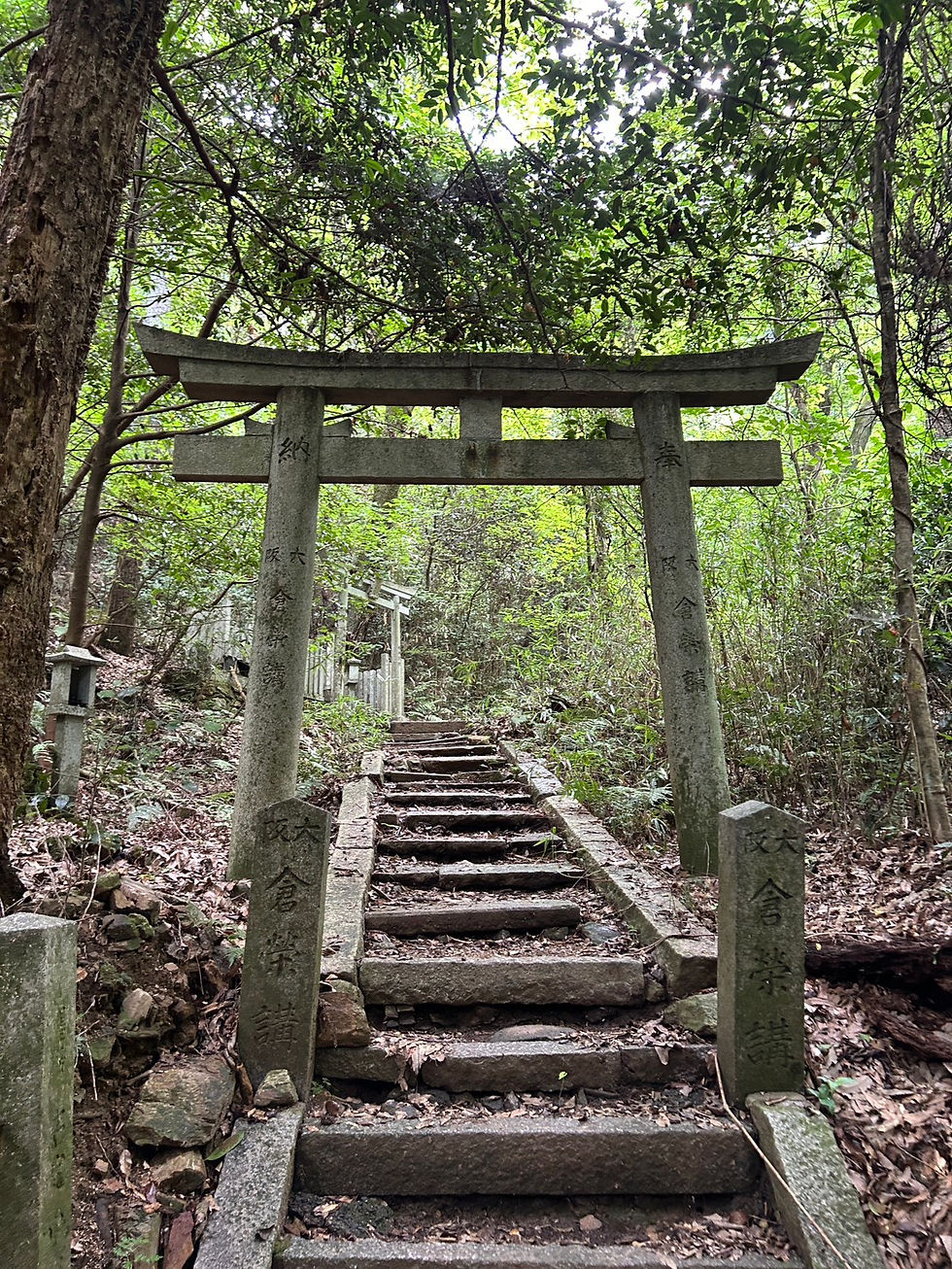Mimuroto-ji - The Temple of Flowers
- Phillip Jackson

- May 5, 2021
- 3 min read
Mimuroto-ji Temple and Gardens
Nestled in the foothills of Uji is one of the most peaceful temples and gardens that you could wish to find in the whole of Kyoto. Known as the Temple of Flowers, Mimuroto-ji sits amidst an expansive garden that offers a wonderful array of plants and trees coming in to bloom at different times throughout the year. The temple was established over 1,200 years ago by Emperor Konin to house a Buddhist image of Senju-Kan'non (the "thousand-armed" Bodhisattva of Compassion) said to have been found in the mountains of Uji, and originally named Omuroto-ji it was later changed to Mimuroto-ji.

After entering the temples high entrance gate the path takes you on a short stroll by the gardens up to an imposing set of stone stairs up to the main temple hall (there is also easier access around the side). At the top of the stairs you are greeted by an interesting statue of a serpent with the head of a smiling old man.

This in fact is the Shinto deity, Ugajin. By rubbing the head it is said that you will be granted a long and healthy life. But if it’s financial fortune that you required then give the tip of his tail a rub. But be warned, you can’t request both health and money, choose wisely!
There are also two other statues by the main hall. A bull and a rabbit. The bull is a more recent version of a previous statue. The story is that a peasant named Tomiemon, bought a bull to farm with. The bull though was weak and unable to work, but the peasant kept the bull and took it to the temple with him when he prayed. A monk placed an amulet on the bull’s horn, and soon after it coughed up a large ball that became known as the bull’s jewel. The bull then also became healthy and strong and the peasant grew rich. The statue has a ball in its mouth representing the jewel, roll the ball around for good fortune.

Due to an old story that a rabbit once escorted an imperial member to the temple you will find instead of a shrine guardian dog, a rabbit. The rabbit statue holds a large stone ball with a stone egg inside. If you reach in through the hole in the ball and stand the egg up it is said that your wishes will come true!
Built in the early 1800s, the present main hall of Mimuroto-ji houses the temple's principle image of the thousand-armed Kannon Bodhisattva. The temple is also the 10th of 33 Holy Places of the Western Country, a series of temples dedicated to Kannon which used to be a popular pilgrimage in ancient times.
You will also find, just a short distance from the main hall, a beautiful three-tiered pagoda.

After visiting the buildings of Mimuroto-ji it’s time to take in the wonderful gardens that draw bus-loads of visitors (the best time to visit Mimuroto-ji is probably early in the morning before the crowds arrive).
From late April to early May, about 20,000 azaleas blossom in their full glory, providing one of the best displays in the Kansai region. In June, around 50 varieties of hydrangea come in to bloom from the over 10,000 plants, a display probably not bettered anywhere else in Japan. And following this from June through to early August lotuses in a variety of colours around the main hall are on display.
The garden at Mimuroto-ji sprawls from the entrance gate of the temple up towards the stairs to the main hall with paths meandering through the colorful blooms. Tall cedar trees spaced throughout the garden add to the mountainous scenery. The garden also has a small teahouse café within for those who would like to enjoy the view with some sweets or green tea.

A short bus ride from Uji, or a hardy but enjoyable walk from Mimurodo (Keihan), the original temple burned down in a fire in 1460. It was rebuilt only to be embroiled in political turmoil in the late 16th century with civil war between Shogun Ashikaga Yoshiaki and the warlord Oda Nobunaga. The monks of Mimuroto-ji decided to side with Ashikaga and when the shogun was defeated by Nobunaga the temple was destroyed and their treasures confiscated. The temple was though later restored by Toyotomi Hideysohi who succeeded Oda Nobunaga.
Unfortunately another large fire destroyed the majority of the temple complex, and most of the current structures date to the rebuilding in 1805.
A trip to Mimuroto-ji, to take in its full beauty, can take about half a day. For further details check the official website (Japanese only) www.mimurotoji.com
Car-parking is also available on site. *HIDDEN PATHS visited Mimuroto-ji before the covid-19 pandemic situation occurred. Please refrain from visiting until it is safe to do so (May 2021).





Comments